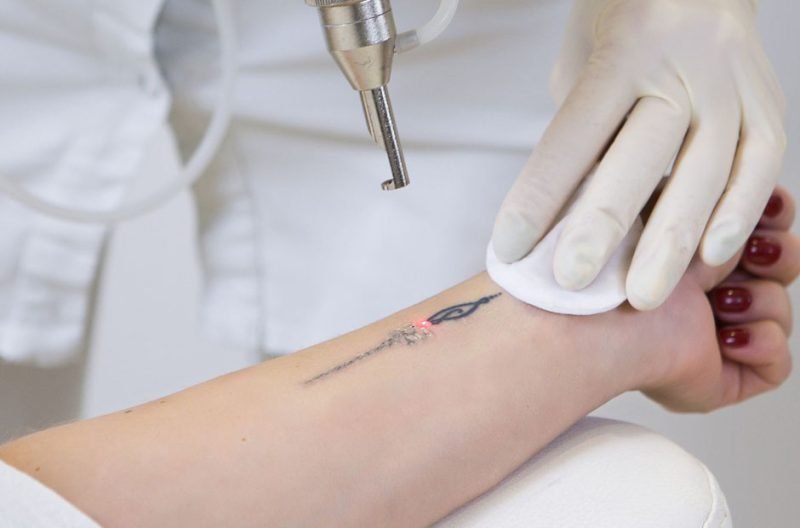
Tattoos have become a popular form of self-expression in recent years, but sometimes individuals may choose to have their tattoos removed for various reasons. Tattoo removal procedures have evolved over the years, offering effective methods to erase unwanted ink. However, the process doesn’t end with the removal session itself. Proper post-care is crucial to ensuring a faster and smoother recovery. In this article, we will explore essential post-care tips that can expedite the healing process after tattoo removal.
When undergoing tattoo removal, whether through laser treatments, dermabrasion, or surgical excision, it’s important to be well-informed about the post-care measures required for optimal healing. Following these post-care tips diligently can minimize complications, reduce discomfort, and promote faster recovery.
Understanding Tattoo Removal
Before delving into post-care tips, let’s briefly understand the tattoo removal process. Tattoo removal aims to break down the ink particles embedded in the skin so that the body can gradually eliminate them. Different procedures employ various techniques to achieve this, such as lasers that target different colors or chemical treatments that fade the tattoo over time. If you’re considering removing your tattoo, you can explore reputable Melbourne tattoo removal clinics that offer professional services.
Types of Tattoo Removal Procedures
There are several types of tattoo removal procedures available today. The most common methods include:
Laser Tattoo Removal: This procedure uses laser technology to target the tattoo ink, breaking it down into smaller fragments that the body’s immune system can eliminate.
Dermabrasion: This method involves mechanically exfoliating the tattooed area to remove the upper layers of skin, effectively removing the tattoo.
Surgical Excision: In this procedure, the tattooed skin is surgically cut out, and the remaining skin is stitched together.
Importance of Post-Care
After undergoing tattoo removal, the treated area needs proper care to facilitate healing and prevent complications. Neglecting post-care instructions can result in delayed recovery, infection, scarring, and other undesirable outcomes. Therefore, it is crucial to follow the recommended post-care guidelines provided by your tattoo removal specialist.
Post-Care Tips for Faster Recovery
Here are some important post-care tips to expedite the recovery process after tattoo removal:
Keep the Area Clean
Maintaining cleanliness is paramount after tattoo removal. Gently cleanse the treated area using mild soap and lukewarm water. Avoid scrubbing or rubbing the area vigorously, as it can irritate the skin. Pat the area dry with a clean towel or let it air dry.
Apply Topical Ointments
Your tattoo removal specialist may prescribe or recommend a specific ointment to apply to the treated area. These ointments can help soothe the skin, minimize discomfort, and promote healing. Apply the ointment as instructed and pay attention to the offered instructions.
Avoid Sun Exposure
Protecting the treated area from sun exposure is crucial during the healing process. UV rays can cause pigmentation changes and slow down the recovery. Cover the area with clothing or apply a broad-spectrum sunscreen with a high SPF whenever you go outside.
Don’t Scratch or Pick at the Area
Itchy skin is a common occurrence during the healing process, but scratching or picking at the treated area can lead to infection and scarring. Instead, gently pat or tap the area if you experience any itching. If the itchiness becomes unbearable, consult your tattoo removal specialist for advice.
Follow the Aftercare Instructions
Your tattoo removal specialist will provide you with detailed aftercare instructions specific to your procedure. These instructions may include avoiding certain activities, keeping the area moisturized, and attending follow-up appointments. Adhering to these instructions diligently is crucial for a faster and smoother recovery.
Managing Discomfort and Swelling
After tattoo removal, some discomfort and swelling are normal. Here are a few tips to manage these symptoms:
Use Ice Packs
Applying ice packs wrapped in a clean cloth to the treated area can help reduce swelling and alleviate discomfort. Use ice packs for short intervals and avoid placing ice directly on the skin to prevent frostbite.
Take Over-the-Counter Pain Relievers
If you experience mild pain or discomfort, over-the-counter pain relievers such as acetaminophen or ibuprofen can help alleviate the symptoms. However, always consult your healthcare provider or follow the instructions on the packaging before taking any medication.
Maintaining Overall Skin Health
Taking care of your skin during the recovery process is essential for optimal healing. Here are some general tips to maintain overall skin health:
Stay Hydrated
Regularly consuming enough water helps to maintain good skin health. It helps keep your skin hydrated, aids in flushing out toxins, and supports the healing process. Aim to consume eight glasses of water or more each day.
Eat a Nutritious Diet
A balanced and nutritious diet plays a crucial role in skin health and healing. Consume a variety of fruits, vegetables, lean proteins, and whole grains to provide your body with the necessary nutrients for optimal recovery.
Avoid Smoking and Alcohol
Smoking and alcohol consumption can hinder the healing process and negatively impact your skin’s health. These habits can delay recovery and increase the risk of complications. It’s best to avoid smoking and limit alcohol intake during the healing period.
Final Thoughts
Proper post-care is essential for faster recovery after tattoo removal. By following the recommended tips and guidelines, you can minimize complications, reduce discomfort, and promote optimal healing. Remember to keep the area clean, follow the aftercare instructions, manage discomfort and swelling, and maintain overall skin health. Always consult your tattoo removal specialist if you have any concerns or questions during the healing process.
Frequently Asked Questions (FAQ’S)
Q1: How long does it take for the skin to heal after tattoo removal?
A1: The healing time varies depending on various factors such as the size and location of the tattoo, the removal method used, and individual healing abilities. In general, it can take several weeks to months for the skin to fully heal.
Q2: Can I exercise or swim after tattoo removal?
A2: It’s best to avoid intense exercise or swimming for the first few weeks after tattoo removal. Excessive sweating and exposure to pool water or saltwater can irritate the treated area and prolong the healing process.
Q3: Can I apply makeup or lotion to the treated area during recovery?
A3: It’s advisable to avoid applying makeup or lotion to the treated area until it has fully healed. These products can introduce bacteria or irritants to the area, increasing the risk of infection or complications.
Q4: Will tattoo removal leave scars?
A4: While modern tattoo removal techniques aim to minimize scarring, it is possible to experience some scarring, especially with certain removal methods or if proper post-care is not followed. Consulting an experienced tattoo removal specialist can help minimize the risk of scarring.
Q5: Can I get a new tattoo over the treated area?
A5: In most cases, it’s best to wait until the treated area has fully healed before getting a new tattoo. Consult your tattoo removal specialist for personalized advice based on your specific situation.


